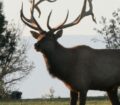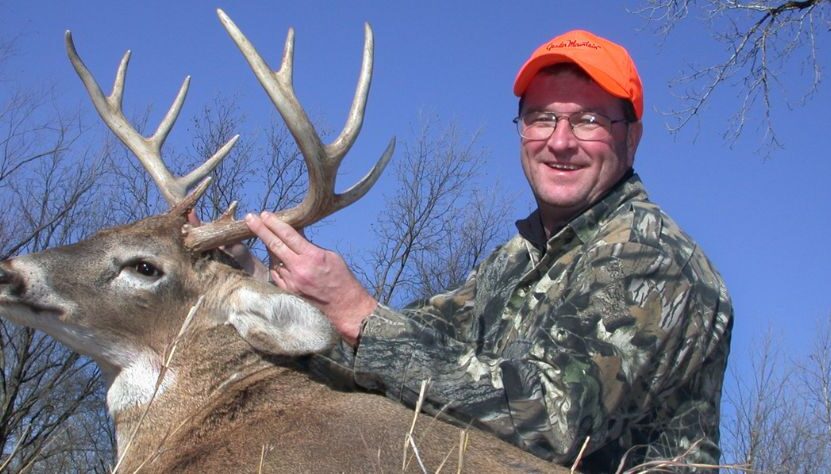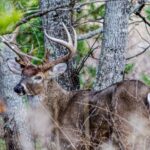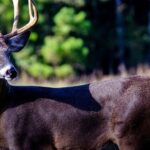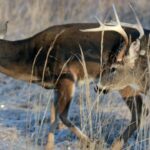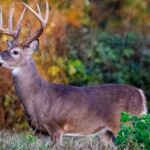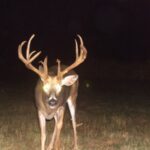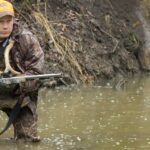Editor’s Note: If you’re still ready to hunt deer, hunters all across the U.S. have learned that they can be successful in taking big bucks in February in the South. You’ll have to study each state’s regulations in Alabama, Florida, Mississippi, Texas, and Virginia to learn when deer season ends, generally around February 10th. The rut is still taking place at the end of January and in February in many sections of the South. If you don’t have a place to hunt, check out some of the fine hunting lodge operations available or look at public lands in each state and their regulations. Although February deer are primarily nocturnal, you can find them and possibly take your best deer of the year.
Since you can’t bag a buck if you don’t see the animal, you must know how to choose the most productive stand sites in February.
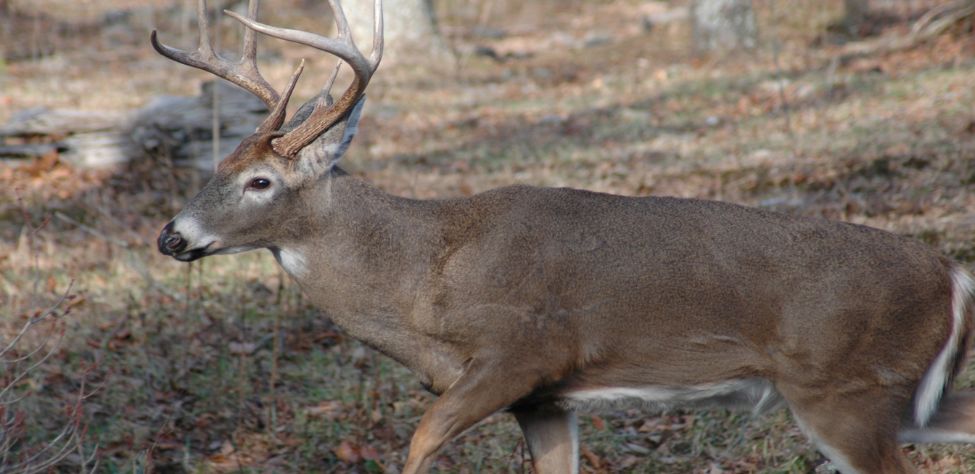
Stadium Seats: Use the same procedure you do to find your seat at a football game. Many hunting guides recommend you use an aerial photo. In an aerial photo, you can see how the ground lies, since each piece of property is different and you’ll have to hunt it differently. You can identify the road systems to enter and leave, as well as the natural barriers, property lines, bodies of water, large fields, and funnels. You even distinguish between hardwoods—small, round, blob-looking features (the tops of trees)—and pine trees with a smoother texture. Topographical maps will enable you to pinpoint land changes and identify ridges, valleys, and terrain breaks.
Public-Land Stands: If you’re hunting public lands, you always must think that possibly someone else may be at your favorite stand site. A few years ago, while hunting public lands, I discovered an acorn-producing white oak tree, surrounded by a huge number of droppings, tracks, and acorn hulls. Two trails led there. I thought the best spot to hunt would be within 50 yards of the white oak tree to watch bucks coming down both trails and have the best opportunity to see the most deer. I assumed the second-best stand site would be 50–100 yards away from the tree, down the most well-defined trail. My last choice would be to take a stand on the more-dim trail that had not been used very much.
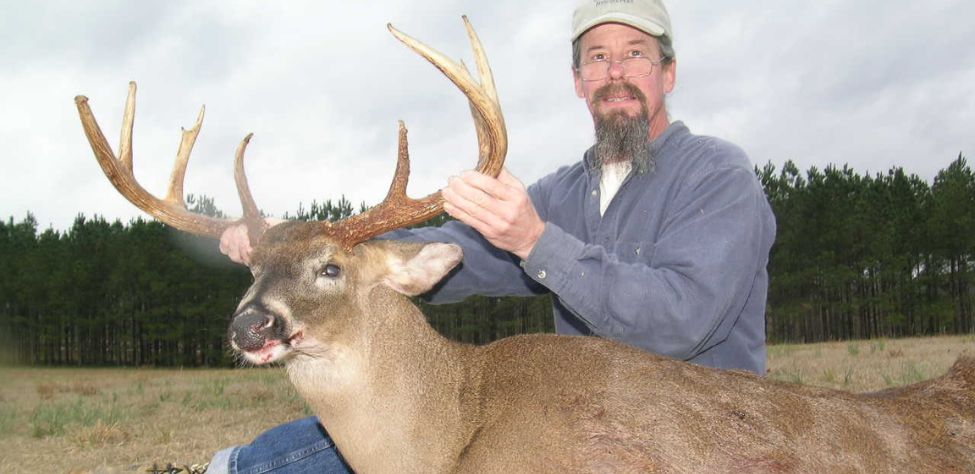
When I rethought my original stand-site priorities and considered what the other February hunters in the area probably would do, I realized that Stand Site I (the oak tree) was an obvious feeding hot spot and would be visited by other hunters. At Stand Site II, I figured the experienced hunter would take this well-defined trail leading to the white oak tree, thinking a novice would set up close to the feeding site. Hunting from Stand Site III appealed to me because I knew that older age-class bucks, often the biggest bucks on a property, rarely used the same trails as younger age-class bucks. An older buck’s trail wouldn’t be as well-defined. I took a nice buck at Stand Site III in February for these reasons.
Green Field Stands: The most obvious green-field stand site is on or near a trail that comes from the woods to a green field, with the best time to hunt there in the late afternoon when deer are moving to the green field to feed. The second-best green field stand site will be 50–100 yards down that trail. Instead, go past this point further down the trail to where you pinpoint two or three other trails intersecting the main trail leading to the green field. These trailheads, often 200–400 yards away from the green field, where several trails come together on the main trail leading to the green field, will be the most productive. Place your tree stand near that intersection.
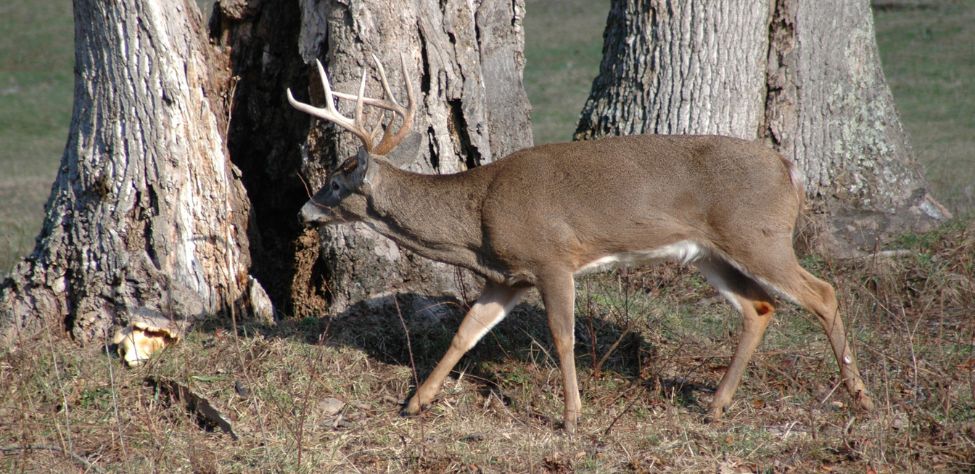
Escape Trail Stands: If you hunt high-pressure areas, one of the most consistent stand sites will be escape trails, where a buck goes after being spooked by other hunters. Escape trails usually lead out of or into thick cover, often near or close to open woodlots, green fields, or crops. Look for the trail coming away from whatever barrier the buck probably has put between him and the hunter, and set up there.
Water Stands: You can buddy-hunt and use a small boat, a canoe, or a kayak, or you can wear waders to reach a tree stand site over or in water in a river-bottom drainage. Then you: leave no scent in the area you plan to hunt; can watch the water’s edge—often a natural deer-migration route; will surprise any deer there, since they don’t expect to see hunters in trees over water or wading in the water; let other hunters drive deer to you if they’re coming by land; and can load any deer you bag into the canoe and transport it easily to your vehicle. I once hunted a water site on my hunting club that produced six nice-sized bucks in February for me out of eight years.
Looking for more content? Check out our YouTube channel and watch “Why I Don’t Worry About Human Odor” by John E. Phillips.

How to Hunt and Take Big Buck Deer on Small Properties
In this book, you’ll hear from 14 hunters who either have gained permission or leased properties as small as six acres to as much as 250 acres, and how they consistently take older-age-class bucks off these little lands.
VERSIONS: AUDIBLE, KINDLE & PRINT

Jim Crumley’s Secrets of Bowhunting Deer
Using a black magic marker and a gray work jumpsuit, Jim Crumley of Buchanan, Virginia, drastically changed the nature and purpose of hunting camouflage when he created the first sportsman’s camouflage – Trebark. Crumley’s love of bowhunting and his desire to be more invisible changed hunting clothing forever.
In this hunting guide, he shares the wisdom that he’s learned throughout his lifetime about how to be a hunter, how to find a deer lease, how to scout for deer, and more.
Special features include how to:
- Have a magic 60 acres to hunt
- Decide the best equipment to use
- Find deer year-round
- Locate land to hunt
- Know the best place to put your tree stand
- Get bucks within bow range
VERSIONS: AUDIBLE, KINDLE & PRINT

How to Hunt Deer Like a Pro
How do you know if the land you hunt has a trophy deer on it? Wildlife manager Bob Zaiglin, of Uvalde, Texas and Jim Crumley, the father of modern-day hunting camouflage, tells you how to find out. GPS can make finding and taking that trophy buck easier. This hunting guide will teach you how to hunt big bucks where no one else can find them, how to call deer, and how to become versatile as a deer hunter, so that if one deer tactic doesn’t work, another one will.
In the chapter, “How to find Bucks at Scrape,” Dr. Keith Causey, retired professor of Wildlife Science at Auburn University, describes the best way to hunt a scrape.
Brad Harrison of Neosho, Missouri, is a nationally-known videographer, professional deer hunter and master at calling deer. Another master is Will Primos of Primos Game Calls. These two experts will tell the best deer calls and when to use them in this book.
And for over 20 years, Bo Pitman, lodge manager of White Oak Plantation, has been studying deer movement patterns. He explains what types of conditions are best for predicting deer movement.
VERSIONS: AUDIBLE, KINDLE & PRINT

Deer hunting and deer hunters are drastically changing each year. To learn new techniques for hunting deer and have more places to hunt, I’ve interviewed some of the best deer hunters in the nation and share their tactics in How to Hunt Deer Like a Pro: Volume II.
In Chapter 10, Jacob Lamar tells you his tactics for consistently taking older-age-class bucks on public lands in several states. Chapter 11, Bob Walker explains how to find places on public lands where you can hunt that 99 percent of the other hunters never have considered hunting. The Bonus Chapter with David Ramey tells you how, where, when and with what equipment to take big Kansas bucks on public lands by hunting in 100-degree weather when others won’t hunt.
Chapter 13, Mark Drury, his family and his guests take mature bucks every season by having more small places to hunt rather than one large property. Drury explains the strategy of having satellite farms to hunt that only may be 50-150 acres each or less. Chapter 15, Pat Reeve, who hunts far-northern states and Canada, says, “I don’t like hunting for mature bucks until the weather is 20 degrees or less.” Chapter 4, Dr. Larry Marchinton says that funnels are the most-reliable stand sites to hunt for big bucks and tells why.
VERSIONS: AUDIBLE & PRINT


